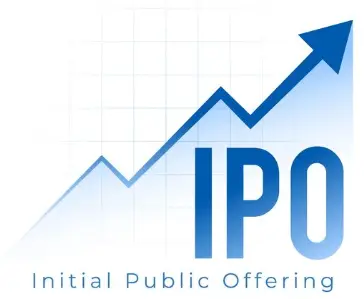The State of Biotech Public Markets: Challenges and Opportunities
In recent years, the biotechnology sector has faced significant challenges, particularly in the public markets. As of the fourth quarter of 2023, the S&P Biotechnology Select Industry Index was more than 50% lower than its peak in February 2021. The decline in market confidence is starkly illustrated by the number of initial public offerings (IPOs) in the sector. Only 30 biotech companies went public in the first three quarters of 2023, a dramatic drop from 114 IPOs in 2021. This downturn has led to a significant reduction in total biotech IPO funding, with only $3.4 billion raised in 2023 compared to $16.0 billion in the same period in 2021. In response to this challenging environment, over 250 biotech firms have initiated layoffs and streamlined their project pipelines to conserve cash.
Venture Capital: A Lifeline for Innovation
Amidst the struggles of public markets, venture capital (VC) funding has emerged as a crucial lifeline for biotech innovation. Although VC funding has also seen a decline since its peak in 2021, it has remained robust, consistently exceeding pre-pandemic levels. In 2022, biotech start-ups secured over $22 billion in funding across various rounds, and 2023 is on track to be another solid year, with more than $12 billion raised by the third quarter. The decline in overall funding has primarily been driven by a reduced number of deals, while the median deal size has remained stable. Investors continue to show a strong preference for innovation, with Series A funding rounds accounting for nearly half of all deals.
The Rise of Innovative Platform Technologies
Innovative platform technologies have dominated biotech funding in recent years, attracting significant VC interest due to their potential to address a wide array of medical indications. In 2022, these platforms secured a remarkable $15.5 billion in funding, representing over two-thirds of total biotech VC investment. This trend starkly contrasts with the $6.5 billion allocated to traditional asset-based biotechs, which focus primarily on developing specific drugs. Despite fluctuations in VC funding, investors remain optimistic about the long-term potential of the sector.
Machine Learning-Enabled Drug Discovery
One of the most promising areas within biotech is machine learning (ML)-enabled drug discovery. Between 2019 and 2022, VC investors invested over $9 billion in start-ups focused on this technology. ML has the potential to revolutionize the traditionally expensive and time-consuming R&D process by improving the selection of molecules with a higher probability of success and enabling precise molecular design for newly identified disease targets. While many companies are still in the preclinical stage, the growing interest in ML is evident, with applications expanding across the entire pharma value chain.
Advancements in Cell Therapies
Cell therapies have also garnered significant attention, with sales exceeding $3 billion in 2022 and projected to rise to over $21 billion by 2026. This growth is driven by the expansion of chimeric antigen receptor (CAR) T-cell therapies and the development of various stem-cell and immune-cell therapies. Despite their success, challenges remain in improving safety and manufacturing processes. In 2022, VC funding in this area exceeded $3 billion, with a focus on regenerative medicines, scalable allogeneic therapies, and precision control to enhance the efficacy and safety of treatments.
Gene and Oligonucleotide Therapies
The field of gene and oligonucleotide therapies is also experiencing rapid growth, with hundreds of therapies in clinical development and several approved in recent years. The success of mRNA vaccines during the COVID-19 pandemic has further fueled interest in this area. In 2022, VC investors provided $3 billion in funding for gene and oligonucleotide therapies, focusing on optimizing mRNA technology, expanding gene editing capabilities, and targeting the transcriptome for therapeutic benefits.
Trends in Asset-Based Biotech Deals
While platform technologies have attracted the lion’s share of VC funding, asset-based biotechs—those developing traditional assets for specific indications—accounted for the remaining third of funding in 2022. Notably, immunology emerged as a key area of interest, capturing 23% of total asset-based funding, a significant increase from previous years. This trend aligns with the growing focus on regenerative cell therapies aimed at reversing immune drivers of disease. In contrast, oncology funding saw a decline, dropping from 46% in 2021 to 22% in 2022, as investors shifted their focus toward platform innovations and patient-specific precision medicines.
Navigating the Future: Key Questions for Biotechs and Investors
As the biotech landscape continues to evolve, uncertainty remains regarding the gap between public and private markets. Investors are left pondering how long this bifurcation will last and whether public-market enthusiasm will return before VC activity slows. Public investors may struggle with the long time horizons typical of biotech, while VC investors are often more patient, willing to wait for the results of innovation.
Biotech companies must clearly articulate their unique value propositions as platform technologies mature and competition intensifies. Companies that prioritize investments in the foundational elements of a strong value proposition are likely to stand out and attract the significant VC funding necessary to guide transformative drugs to market.
Conclusion
The biotechnology sector is at a crossroads, facing significant challenges in public markets while simultaneously benefiting from robust venture capital support. As innovative platform technologies continue to attract funding and attention, biotechs must navigate the complexities of a shifting landscape. By focusing on unique innovations and addressing unmet medical needs, biotech companies can position themselves for success in an increasingly competitive environment. The future of biotech holds promise, but it will require strategic foresight and adaptability to thrive in the face of ongoing challenges.

